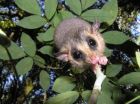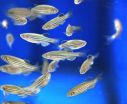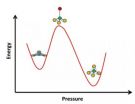(Press-News.org) The genetic changes that transformed wild animals into domesticated forms have long been a mystery. An international team of scientists has now made a breakthrough by showing that many genes controlling the development of the brain and the nervous system were particularly important for rabbit domestication. The study is published today in Science and gives answers to many genetic questions.
The domestication of animals and plants, a prerequisite for the development of agriculture, is one of the most important technological revolutions during human history. Domestication of animals started as early as 9,000 to 15,000 years ago and initially involved dogs, cattle, sheep, goats and pigs. The rabbit was domesticated much later, about 1,400 years ago, at monasteries in southern France. It has been claimed that rabbits were domesticated because the Catholic Church had declared that young rabbits were not considered meat, but fish, and could therefore be eaten during lent! When domestication occurred, the wild ancestor, the European rabbit (Oryctolagus cuniculus), was confined to the Iberian Peninsula and southern France.
There are several reasons why the rabbit is an outstanding model for genetic studies of domestication: its domestication was relatively recent, we know where it happened, and this region is still densely populated with wild rabbits, explains Miguel Carneiro, from CIBIO/Inbio-University of Porto, one of the leading authors on the paper. Wild rabbits also serve as an excellent model for genetic studies of the early stages of species formation, as shown in an accompanying study we publish today in PLoS Genetics, adds Miguel Carneiro.
The scientists first sequenced the entire genome of one domestic rabbit to develop a reference genome assembly. Then they resequenced entire genomes of domestic rabbits representing six different breeds and wild rabbits sampled at 14 different places across the Iberian Peninsula and southern France.
No previous study on animal domestication has involved such a careful examination of genetic variation in the wild ancestral species. This allowed us to pinpoint the genetic changes that have occurred during rabbit domestication, says Leif Andersson, Uppsala University, Swedish University of Agricultural Sciences and Texas A&M University.
In contrast to domestic rabbits, wild rabbits have a very strong flight response because they are hunted by eagles, hawks, foxes and humans, and therefore must be very alert and reactive to survive in the wild. In fact, Charles Darwin wrote in On the Origin of Species that "…no animal is more difficult to tame than the young of the wild rabbit; scarcely any animal is tamer than the young of the tame rabbit". Darwin used domestic animals as a proof-of-principle that it is possible to change phenotypes by selection. The scientists involved in the current study have now been able to reveal the genetic basis for this remarkable change in behaviour and the study has given important new insights about the domestication process.
Rabbit domestication has primarily occurred by altering the frequencies of gene variants that were already present in the wild ancestor. Our data shows that domestication primarily involved small changes in many genes and not drastic changes in a few genes, states Kerstin Lindblad-Toh, co-senior author, Director of Vertebrate Genome Biology at the Broad Institute of MIT and Harvard, professor at Uppsala University and Co-Director of Science for Life Laboratory.
The team observed very few examples where a gene variant common in domestic rabbits had completely replaced the gene variant present in wild rabbits; it was rather shifts in frequencies of those variants that were favoured in domestic rabbits.
An interesting consequence of this is that if you release domestic rabbits into the wild, there is an opportunity for back selection at those genes that have been altered during domestication because the 'wild-type' variant has rarely been completely lost. In fact, this is what we plan to study next, comments Miguel Carneiro.
The scientists found no example where a gene has been inactivated during rabbit domestication and there were many more changes in the non-coding part of the genome than in the parts of the genome that codes for protein.
The results we have are very clear; the difference between a wild and a tame rabbit is not which genes they carry but how their genes are regulated i. e. when and how much of each gene is used in different cells, explains Miguel Carneiro.
The study also revealed which genes that have been altered during domestication. The researchers were amazed by the strong enrichment of genes involved in the development of the brain and the nervous system, among the genes particularly targeted during domestication.
But that of course makes perfect sense in relation to the drastic changes in behaviour between wild and domestic rabbits, concludes Kerstin Lindblad-Toh.
The study shows that the wild rabbit is a highly polymorphic species that carries gene variants that were favourable during domestication, and that the accumulation of many small changes led to the inhibition of the strong flight response – one of the most prominent phenotypic changes in the evolution of the domestic rabbit
We predict that a similar process has occurred in other domestic animals and that we will not find a few specific "domestication genes" that were critical for domestication. It is very likely that a similar diversity of gene variants affecting the brain and the nervous system occurs in the human population and that contributes to differences in personality and behaviour, says Leif Andersson.
INFORMATION:
For more information contact:
Professor Leif Andersson
Uppsala University
Swedish University of Agricultural Sciences & Texas A&M University
phone: +46-18-471 4904
+46-70-514 4904
e-mail: Leif.Andersson@imbim.uu.se
Professor Kerstin Lindblad-Toh
Uppsala University and Broad Institute
phone: +46 70 167 9552 or +1 617 714 7745
e-mail: kersli@broadinstitute.org
Dr. Miguel Carneiro
CIBIO/Inbio-University of Porto
phone: +351-969190100
e-mail: miguel.carneiro@cibio.up.pt
New research reveals how wild rabbits were genetically transformed into tame rabbits
2014-08-28
ELSE PRESS RELEASES FROM THIS DATE:
Electric current to brain boosts memory
2014-08-28
VIDEO:
Stimulating a region in the brain with non-invasive electrical current using magnetic pulses (Transcranial Magnetic Stimulation) improves memory, reports a new Northwestern Medicine study in Science. The discovery opens...
Click here for more information.
CHICAGO --- Stimulating a particular region in the brain via non-invasive delivery of electrical current using magnetic pulses, called Transcranial Magnetic Stimulation, improves memory, reports a new Northwestern Medicine® ...
Less than $200 million would conserve precious Atlantic Forest in Brazil, say researchers
2014-08-28
Brazil could conserve its valuable Atlantic Forest by investing just 0.01 per cent of its annual GDP, according to a new study.
The Atlantic Forest (Mata Atlântica) is one of the most important and threatened biodiversity hotspots in the world, containing the only living examples of nearly 10,000 species of plant and more bird species than all of Europe.
Situated along the Atlantic coast of Brazil, it once covered an area of nearly 1.5 million square kilometres. Today, the forest is home to more than 130 million people and it covers only 160,000 km2, because of deforestation. ...
Home is where the microbes are
2014-08-28
A person's home is their castle, and they populate it with their own subjects: millions and millions of bacteria.
A study published today in Science provides a detailed analysis of the microbes that live in houses and apartments. The study was conducted by researchers from the U.S. Department of Energy's Argonne National Laboratory and the University of Chicago.
The results shed light on the complicated interaction between humans and the microbes that live on and around us. Mounting evidence suggests that these microscopic, teeming communities play a role in human ...
New DNA study unravels the settlement history of the New World Arctic
2014-08-28
We know people have lived in the New World Arctic for about 5,000 years. Archaeological evidence clearly shows that a variety of cultures survived the harsh climate in Alaska, Canada and Greenland for thousands of years. Despite this, there are several unanswered questions about these people: Where did they come from? Did they come in several waves? When did they arrive? Who are their descendants? And who can call themselves the indigenous peoples of the Arctic? We can now answer some of these questions, thanks to a comprehensive DNA study of current and former inhabitants ...
Penn-NIH team discover new type of cell movement
2014-08-28
VIDEO:
Penn and NIH researchers have demonstrated a never-before characterized type of cell movement. In this video, a cell's vimentin cytoskeleton (green) pulls the nucleus (red) forward to generate a high-pressure...
Click here for more information.
For decades, researchers have used petri dishes to study cell movement. These classic tissue culture tools, however, only permit two-dimensional movement, very different from the three-dimensional movements that cells make in a ...
How the zebrafish gets its stripes
2014-08-28
This news release is available in German. The zebrafish, a small fresh water fish, owes its name to a striking pattern of blue stripes alternating with golden stripes. Three major pigment cell types, black cells, reflective silvery cells, and yellow cells emerge during growth in the skin of the tiny juvenile fish and arrange as a multilayered mosaic to compose the characteristic colour pattern.
While it was known that all three cell types have to interact to form proper stripes, the embryonic origin of the pigment cells that develop the stripes of the adult fish has ...
Watching the structure of glass under pressure
2014-08-28
Glass has many applications that call for different properties, such as resistance to thermal shock or to chemically harsh environments. Glassmakers commonly use additives such as boron oxide to tweak these properties by changing the atomic structure of glass. Now researchers at the University of California, Davis, have for the first time captured atoms in borosilicate glass flipping from one structure to another as it is placed under high pressure.
The findings may have implications for understanding how glasses and similar "amorphous" materials respond at the atomic ...
Bradley Hospital collaborative study identifies genetic change in autism-related gene
2014-08-28
PROVIDENCE, R.I. – A new study from Bradley Hospital has identified a genetic change in a recently identified autism-associated gene, which may provide further insight into the causes of autism. The study, now published online in the Journal of Medical Genetics, presents findings that likely represent a definitive clinical marker for some patients' developmental disabilities.
Using whole-exome sequencing – a method that examines the parts of genes that regulate protein, called exons - the team identified a genetic change in a newly recognized autism-associated gene, Activity-Dependent ...
Yale study identifies possible bacterial drivers of IBD
2014-08-28
Yale University researchers have identified a handful of bacterial culprits that may drive inflammatory bowel diseases (IBD) such as Crohn's disease and ulcerative colitis, using patients' own intestinal immune responses as a guide.
The findings are published Aug. 28 in the journal Cell.
Trillions of bacteria exist within the human intestinal microbiota, which plays a critical role in the development and progression of IBD. Yet it's thought that only a small number of bacterial species affect a person's susceptibility to IBD and its potential severity.
"A handful ...
Drug shows promise against Sudan strain of Ebola in mice
2014-08-28
August 28, 2014 — (BRONX, NY) — Researchers from Albert Einstein College of Medicine of Yeshiva University and other institutions have developed a potential antibody therapy for Sudan ebolavirus (SUDV), one of the two most lethal strains of Ebola. A different strain, the Zaire ebolavirus (EBOV), is now devastating West Africa. First identified in 1976, SUDV has caused numerous Ebola outbreaks (most recently in 2012) that have killed more than 400 people in total. The findings were reported in ACS Chemical Biology.
Between 30 and 90 percent of people infected with Ebola ...





